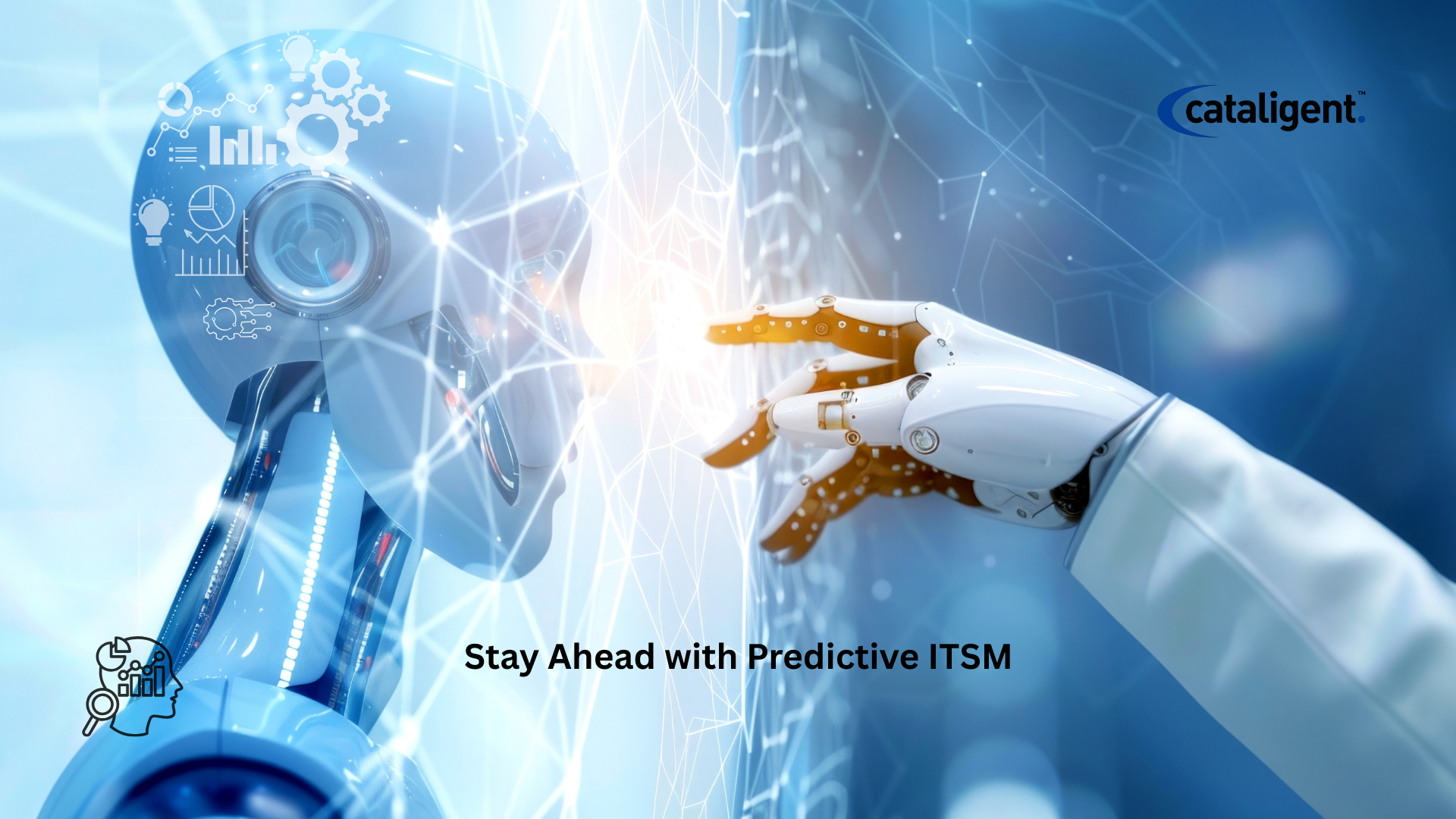Business today doesn’t wait for problems to happen—it demands foresight. Traditional IT Service Management (ITSM) was designed for a reactive world, where incidents were logged, root causes identified, and fixes applied after the fact. But in the current business landscape—where downtime costs millions, customer expectations are unforgiving, and transformation is constant—reactive ITSM is no longer enough. Organizations need Predictive ITSM: an AI-driven, proactive approach that prevents disruptions, optimizes resources, and positions IT as a strategic enabler of business transformation.
What is Predictive ITSM?
Predictive ITSM is the evolution of service management, integrating artificial intelligence (AI), machine learning (ML), and predictive analytics into ITSM processes. Instead of waiting for problems to manifest, predictive ITSM uses data to anticipate them.
Where traditional ITSM is reactive—logging incidents after they occur—predictive ITSM is proactive and intelligent, transforming IT operations into a foresight-driven framework.
Key features include:
- Forecasting Issues Before They Occur: Using ML algorithms to predict potential failures in systems, networks, or applications.
- Automated Preventive Actions: Triggering automated responses such as scaling infrastructure or restarting services before disruption.
- Dynamic Service Optimization: Continuously adjusting resources to meet anticipated demand.
- Strategic Insight Generation: Providing leaders with forward-looking insights that inform transformation roadmaps.
This shift turns ITSM from a cost center into a value creator—directly supporting innovation, agility, and customer satisfaction.
Why Predictive ITSM Matters
- Minimizes Downtime and Service Disruptions
Reactive ITSM allows issues to hit users before action is taken. Predictive ITSM, on the other hand, prevents costly downtime by resolving issues before they impact employees or customers. This protects both revenue and trust. - Optimizes Resource Allocation
AI models can forecast peaks in demand—whether during seasonal sales, financial quarter closings, or large-scale transformation initiatives. This allows IT teams to allocate resources more efficiently, preventing overprovisioning and avoiding bottlenecks. - Improves Strategic Decision-Making
Data-backed forecasts give leaders actionable insights into infrastructure investments, vendor strategies, and risk planning. IT becomes not just a support function but a strategic advisor in transformation efforts. - Supports Continuous Transformation
Every transformation—whether cloud migration, ERP modernization, or AI adoption—comes with risks. Predictive ITSM ensures these risks are addressed before they become roadblocks, allowing transformation initiatives to proceed smoothly. - Delivers Cost Savings
Prevention is far cheaper than remediation. By reducing downtime, avoiding penalties from missed SLAs, and cutting manual interventions, predictive ITSM generates measurable savings across the IT budget.
How Predictive ITSM Works
- Data Collection and Integration
Predictive ITSM starts with consolidating diverse data streams: incident logs, service tickets, system performance data, and user behavior metrics. This creates the foundation for predictive modeling. - AI and Machine Learning Models
Advanced algorithms analyze this data to detect anomalies, identify recurring patterns, and forecast potential disruptions. For example, ML might detect that certain error logs consistently precede network downtime. - Proactive Alerts and Recommendations
Instead of waiting for a service desk ticket, IT teams receive early warnings with context-sensitive recommendations—allowing them to act before users are affected. - Closed-Loop Automation
Some preventive actions can be automated. If the system predicts a server failure, automation can trigger a preemptive restart or load-balancing process without human intervention. - Continuous Learning and Adaptation
AI models continuously refine themselves with new data, improving accuracy over time and adapting to evolving IT environments.
The Role of Business Transformation in Predictive ITSM
Predictive ITSM doesn’t just improve IT efficiency—it directly accelerates business transformation:
- Enables Faster Innovation: With fewer outages and disruptions, organizations can launch new digital products and services with confidence.
- Supports Scalable Growth: Predictive insights ensure IT infrastructure scales seamlessly with business expansion.
- Drives a Cultural Shift: IT teams move away from firefighting toward strategic problem-solving, reinforcing a culture of foresight.
- Aligns IT with Business Strategy: Predictive ITSM ties IT performance directly to business goals, from revenue growth to customer experience.
- Improves Customer and Employee Trust: Reliable services reduce frustration and increase adoption of new technologies rolled out during transformation.
Real-World Applications of Predictive ITSM
- Retail and E-Commerce: Predicting traffic surges during online sales and scaling infrastructure in advance to prevent outages.
- Banking and Finance: Forecasting potential ATM or mobile banking slowdowns during peak periods to protect service availability.
- Healthcare: Ensuring telemedicine platforms remain stable by predicting bandwidth or system stress during peak usage.
- Manufacturing: Anticipating system or machine downtime to avoid production halts and supply chain disruption.
- Government Services: Identifying potential spikes in citizen portal usage and preparing systems for smooth service delivery.
These use cases demonstrate how predictive ITSM protects business continuity while enabling transformation initiatives.
How Cataligent Can Help
Cataligent enables organizations to make predictive ITSM a reality through consulting expertise and its CAT4 platform:
- Data Integration and Assessment
Cataligent consolidates ITSM data from multiple systems, creating a unified foundation for predictive analytics. - AI-Driven Predictive Models
Through CAT4, Cataligent helps organizations deploy advanced algorithms that forecast incidents and generate actionable insights tailored to business needs. - Automation of Preventive Actions
With CAT4, common preventive measures—such as restarting servers, scaling cloud capacity, or rerouting traffic—can be automated, ensuring speed and consistency. - Proactive Monitoring and Reporting
CAT4 provides real-time dashboards, predictive alerts, and trend analysis, enabling continuous oversight of service health. - Alignment with Transformation Roadmaps
Cataligent ensures predictive ITSM initiatives align with broader transformation goals, from digital modernization to cloud adoption, maximizing both ROI and resilience.
Final Thoughts
The shift from reactive ITSM to Predictive ITSM is more than a technological upgrade—it’s a strategic necessity for organizations undergoing continuous transformation. By leveraging AI, machine learning, and predictive analytics, ITSM evolves into a proactive, intelligent system that prevents disruptions, optimizes resources, and directly fuels innovation.
With Cataligent’s consulting expertise and the CAT4 platform, organizations can confidently build predictive ITSM capabilities that not only protect business continuity but also accelerate transformation. The result is a service management model that turns IT from a responder into a visionary—anticipating challenges, enabling growth, and ensuring business transformation is both resilient and sustainable.

